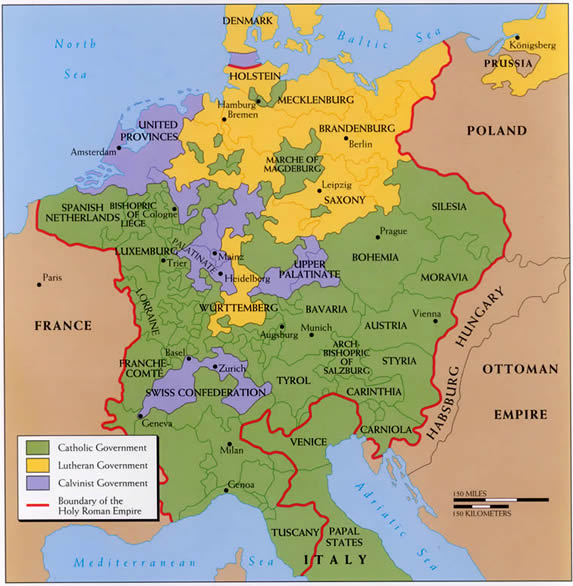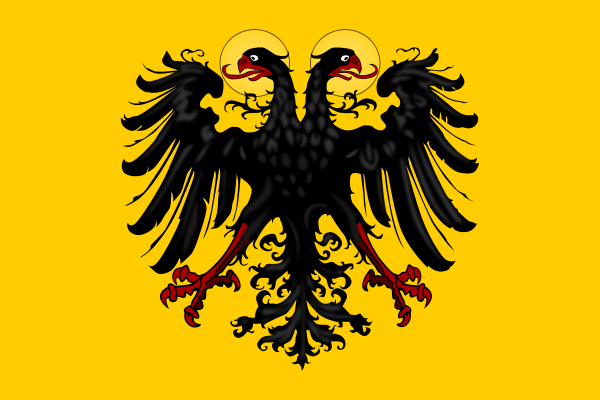During the period of 1500 to 1750, the Holy Roman Empire grew to be a large political entity but faced serious problems that brought it close to the point of disintegration. The immense territory of the empire—over 300 states of varying size—was to be its ultimate undoing.
Though several emperors—most notably Charles V—tried to unite the Empire into a modern state like France and England, they were frustrated by the diversity, size, and vested interests of its many rulers.
When Charles V (Charles I of Spain) was elected the Holy Roman Emperor in 1519, he raised the profile of the Empire by uniting Habsburg Spain, Austria, and the Austrian Netherlands, with the Holy Roman Empire.
  |
Combined with the Kingdom of Naples, and also the Spanish colonies in the Americas, the Holy Roman Empire was becoming an important political entity. When Charles V opened the Diet of Worms in 1521, he proclaimed that “the empire from of old had not many masters, but one, and it is our intention to be that one.”
Charles’s power was accentuated when he was crowned as the Holy Roman Emperor in February 1530, by Pope Clement VII at Bologna, the first emperor to have been crowned since Frederick III, and the last person to be crowned as the Holy Roman Emperor by the papacy.
But Charles V faced many challenges in his quest to unite and extend the Holy Roman Empire. The increasing power of the French kings and Ottoman Turkey threatened the Empire. In 1529, the Ottoman army— after having overrun Hungary—besieged the gates of Vienna, but the city held fast and the Turks were forced to retreat.
 |
| The Holy Roman Empire in 1648 |
However, within Europe itself the religious debates following the increasing popularity of Martin Luther and John Calvin led to factionalism and fighting between Protestants and Catholics, the former being supported by the Habsburg dynasty.
These conflicts merged with wider dynastic struggles within the House of Austria for power in Europe that became known as the Thirty Years’ War, which lasted from 1618 to 1648.
Germany was devastated in the war, with more than 5 million German lives lost, while Austria was forced to sign the Peace of Westphalia, which allowed the princes of the Empire to negotiate their own foreign alliances without the Emperor. After this defeat, the Holy Roman Empire ceased to play a dominant role in the European balance of power.
   |
Although the political power of the Holy Roman Empire was sapped, the role of the electors became important. Initially there were three archbishops, those of Mainz, Cologne, and Trier; the king of Bohemia; the count Palatine of the Rhine; and the elector of Saxony; and the elector of Brandenberg. To these seven, the rulers of Bavaria, Hanover, and Hesse-Cassel later were appointed electors.
These electors were granted considerable autonomy and acted as a counterweight to Imperial power. Though the Habsburg Empire and the Holy Roman Empire were two distinct political entities, the Habsburg dynasty continued to assume the title of Emperor.
Only now the Habsburgs had to share power with the electors, and their control over the Imperial diet was reduced. In 1806, Francis I, Emperor of Austria, relinquished the title of Holy Roman Emperor. After the Napoleonic wars, the political map of Europe was redrawn at the Congress of Vienna (1814–15), at which time the Holy Roman Empire was officially dissolved.
